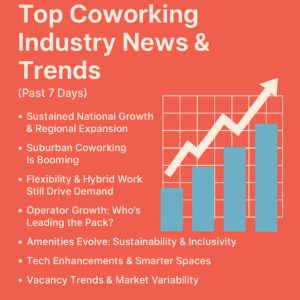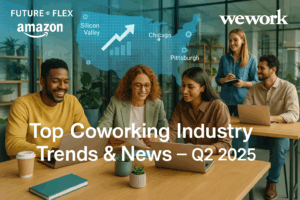- Generative AI is rapidly automating knowledge work, and CEOs need to act now or risk falling behind.
- Employees who explore and learn AI tools on their own often adopt faster than top-down strategies allow.
- Fear and confusion among workers are major barriers, so strong leadership and proper training are essential
We are standing at a historic inflection point. Generative AI is not just another shiny new technology.
According to my interview with Joe Galvin, Chief Research Officer at Vistage International, it represents what he calls “the automation of the knowledge worker.” Much like the industrial revolution displaced artisans with steam-powered machines, Gen AI now enables the automation of work involving words, numbers, images, sounds, and video.
Leaders who fail to act decisively may soon find themselves and their organizations left behind.
Yet action does not simply mean adopting new software or drafting a strategy document. It means empowering individuals at every level to experiment, learn, and grow with Gen AI tools.
As Galvin observes, individuals figure out how to leverage Gen AI much faster than organizations do. The real opportunity today lies not in waiting for a corporate-wide transformation, but in enabling every worker to discover how Gen AI can enhance their specific tasks.
CEOs must “release the Kraken,” as Galvin puts it, giving employees the tools, freedom, and flexibility to explore — backed by appropriate governance and security protocols.
Early Wins, Long-Term Challenges
The productivity gains available today are real and immediate. Nearly every CEO and knowledge worker Galvin has spoken with has quickly found ways to save hours or even days of labor using Gen AI.
In his own experience, Galvin shaved three and a half days off a project by simply automating the processing of open-ended survey responses. And the data from the executives of SMEs who make up Vistage members is equally compelling: according to a recent Vistage report, in the first quarter of 2023, 41% of CEOs viewed Gen AI as a tremendous opportunity; by the fourth quarter, that number had leapt to 77%.
This initial phase is about “picking the low fruit” and finding simple, clear wins that can build momentum. But the road ahead grows steeper.
Automating more complex workflows and team processes requires deeper expertise, greater time investment, and more sophisticated use of the technology. Success at the organizational level will remain challenging, elusive, and expensive for some time, especially for small and mid-sized businesses.
The critical insight is this: leaders cannot afford to wait for perfect solutions. They must seize the current moment to unlock individual productivity gains. By doing so, they lay the groundwork for more advanced organizational transformation down the line.
The Human Factor: Fear, Training, and Engagement
Despite growing CEO enthusiasm, significant barriers remain at the employee level. Fear and anxiety about Gen AI are real and underappreciated. Many workers worry about job loss, misunderstand the technology, or feel overwhelmed by its complexity. And while CEOs might assume that telling employees to “experiment” is enough, the Vistage data suggests otherwise. Only around 20% of companies bring in external experts for Gen AI training, leaving most employees to fend for themselves with internal expertise that often lacks depth.
Galvin stresses that leadership must come from the top. CEOs who personally use Gen AI lead companies that are further along the adoption curve.
Conversely, leaders who ignore it leave their organizations stagnant. Employees need not just permission but also encouragement, training, and clear guardrails. Providing structured opportunities to learn and experiment safely is crucial to overcoming fear and building proficiency.
The learning curve for Gen AI is significant. Unlike a simple web browser, mastering Gen AI requires ongoing effort and iteration. Workers must move from basic curiosity to developing sophisticated prompting skills, securely applying Gen AI to proprietary data, and eventually integrating specialized applications into their workflows.
Importantly, engagement levels correlate strongly with Gen AI adoption. Engaged employees are more likely to use the time saved by automation to deliver higher-quality work, dig deeper into analysis, and create greater value.
Disengaged employees, by contrast, may misuse their newfound free time or fail to adopt the tools altogether. In the long run, using Gen AI effectively will shift from a competitive advantage to a baseline requirement — and those who fail to adapt will be left behind.
Time to Act: Metrics, Incentives, and Future Proofing
CEOs must rethink how they measure and incentivize Gen AI adoption. Galvin suggests that the primary metric should be time: how much time are employees investing in learning to use Gen AI tools? Organizations should track progression from AI curiosity to sophisticated application as a sign of future readiness.
Incentives should align with both learning and outcomes. Rather than focusing solely on cost savings or short-term ROI, leaders should recognize and reward employees who demonstrate increased productivity, deeper engagement, and higher-quality work through Gen AI use.
Simple acknowledgments, career advancement opportunities, and public recognition can go a long way in motivating experimentation.
Ultimately, as Galvin points out, today’s curiosity will evolve into tomorrow’s necessity. Skills that seem optional today will soon become minimum qualifications, just as computer literacy did in the 1990s.
CEOs must recognize that while organizational transformation will take time and significant resources, empowering individuals to innovate now is the best way to future-proof their companies.
We are all standing on the beach at Kitty Hawk, watching the first flight of a new era. The question for CEOs is simple: will you be a spectator or a pioneer?
The post Future Success Hinges On CEOs Empowering Employees To Experiment With Gen AI appeared first on Allwork.Space.




